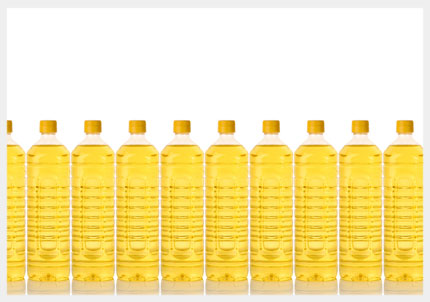Sesame Oil

Seasame, botanically sesamum indicum, is an annual tropical plant in the genus Sesamum. There are contradictions regarding the actual origin of the plant, but probably it is a native to Africa where similar spices are found in large quantities. Sesame has a recorded history that dates back to Babylonian times.
This flowering plant grows upto the height of 3 ft., with opposite leaves 4 to 14 cm (5.5 in) long with an entire margin. The sesame plant is cultivated throughout Asia, and the seeds play a vital role in many ethnic cuisines. The seed contains about 50 to 60% of a fatty oil, which is characterized by a two lignanes, sesamin and sesamolin (approximately 300 ppm in the oil).
Sesame oil or gingelly oil or til oil is an edible vegetable oil extracted from the seeds of a tropical plant sesamum indicum. Termed as the “queen of all oils” for its innumerable health benefits in ayurveda and other regional medicinal systems, sesame oil has been widely used in treating various health complexities. A popular edible oil, this vegetable oil plays a vital role in many ethnic Asian cuisines. Besides being used as a cooking oil in South India, it is often used as a flavor enhancer in Korean and Southeast Asian cuisines. The presence of sesamol, an antioxidant that keeps food fresh for a long time, makes the sesame oil a perfect choice for its use in pickles.
It contains considerable amounts of polyunsaturated fatty acids like linoleic acid and oleic acid that are good for the heart. About 100 gm. of the oil contains a frightening 883 calorie, but only around 15 gm. of the oil is saturated fat. Recently, researchers discovered that cooking with sesame oil in place of other edible oils appears to help reduce high blood pressure and lower the amount of medication needed to control hypertension. In the Tamil language of India, Sesame Oil is called “Nalla Ennai” which literal translation in English is “good oil”.
Sesame oil varies in colours and taste. The cold-pressed sesame oil is almost colourless, while Indian sesame oil (also known as ingelly or til oil) is golden and Chinese sesame oil is commonly has a dark brown colour. In East Asian countries, the oil is extracted from toasted hulled sesame seeds which are responsible for its dark colour, whereas the cold-pressed sesame oil is produced directly from raw seeds.
Sesame Oil in Cooking
Sesame oil is widely used as a cooking oil in many regions of the world. This oil is extensively popular in Asian countries, especially in the South Indian state of Tamil Nadu. Due to the presence of antioxidants, this oil is considered more stable than most vegetable oils. Because of its high boiling point, it is capable of retaining its natural structure and does not break down even when heated to a very high temperature.
Sesame Oil a Wholesome Tonic
It contains higher concentrations of Vitamin E, an anti-oxidant and has been correlated with lowering cholesterol levels. Sesame oil is a rich source of magnesium, copper, calcium, iron, zinc and Vitamin B6. The presence of magnesium supports vascular and respiratory health. Whereas, calcium lessens the risk of colon cancer, osteoporosis, migraine and PMS. Zinc promotes bone health. This vegetable oil is also helpful in hepatitis, diabetes and migraines.
Other Uses
Sesame oil is also used as a solvent in injected drugs or intravenous drip solutions. It is naturally antibacterial for common skin pathogens, such as staphylococcus and streptococcus as well as common skin fungi, such as athlete’s foot fungus, etc. Often referred as a ‘queen of all vegetable oils’, this essential oil is also used for:
- Hair treatment
- Body massage
- Food manufacture
- Drug manufacture
- Worship
